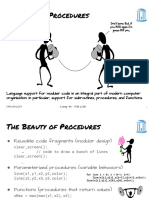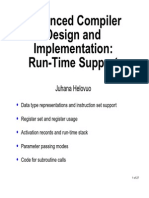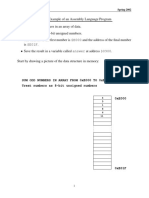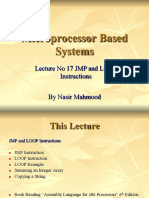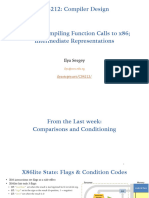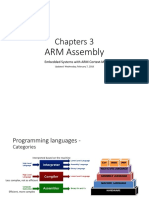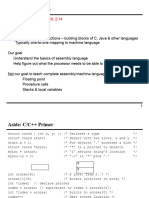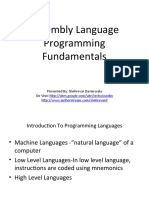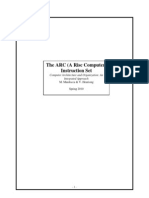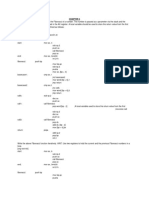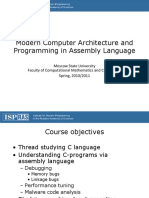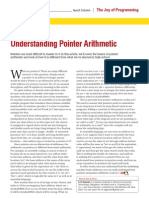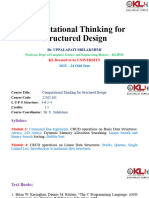0% found this document useful (0 votes)
33 views38 pagesFa24 Week 9
The document outlines important reminders for upcoming exams and lab submissions, including specific instructions for each. It also provides a detailed review of assembly language concepts, including code generation strategies for conditionals and loops, as well as the procedure call standard for managing registers and stack frames. Additionally, it includes examples of function prologues and epilogues in assembly code.
Uploaded by
David Haoyu SunCopyright
© © All Rights Reserved
We take content rights seriously. If you suspect this is your content, claim it here.
Available Formats
Download as PDF, TXT or read online on Scribd
0% found this document useful (0 votes)
33 views38 pagesFa24 Week 9
The document outlines important reminders for upcoming exams and lab submissions, including specific instructions for each. It also provides a detailed review of assembly language concepts, including code generation strategies for conditionals and loops, as well as the procedure call standard for managing registers and stack frames. Additionally, it includes examples of function prologues and epilogues in assembly code.
Uploaded by
David Haoyu SunCopyright
© © All Rights Reserved
We take content rights seriously. If you suspect this is your content, claim it here.
Available Formats
Download as PDF, TXT or read online on Scribd
/ 38
